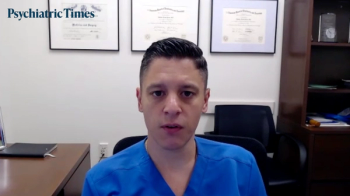
- Vol 39, Issue 8
Telepsychiatry Initiatives in Psychiatry Departments: Enabling Sustainable Growth
How can telehealth help academic psychiatry departments improve administrative efficiency and expand their clinical services?
FROM THE ACADEMY OF CONSULTATION-LIAISON PSYCHIATRY
Academic medical center psychiatry departments, like many other medical specialty areas, often struggle to find contemporary opportunities to grow and consolidate services, maintain market share, and support other clinical divisions. Psychiatry departments traditionally focus on outpatient clinics, hospital-based and emergency-based services, and inpatient psychiatric units as sources of clinical productivity and revenue. Departments with appropriately trained and privileged physicians can supplement clinical revenue with electroconvulsive therapy (ECT), repetitive transcranial magnetic stimulation (rTMS), and other neuromodulation interventions.
The development and the recent explosion of opportunities in
Our recent experience with telepsychiatry in an academic department of psychiatry led to significant expansion of clinical services provision and increased administrative efficiency. We are now able to provide robust psychiatric support to emergency departments (EDs), hospital inpatient units, outpatient psychiatric services, and primary care clinics in a complex, geographically dispersed, integrated health system in northern and central Texas (from Dallas to Austin).1
Baylor Scott & White Health–Temple Department of Psychiatry
Baylor Scott & White Health (BSWH) is the largest not-for-profit health care system in Texas and one of the largest in the United States. Baylor Scott & White Medical Center–Temple is a comprehensive 636-bed academic medical center and level 1 trauma center and is a main clinical education site for the Texas A&M University College of Medicine Health Science Center. Baylor Scott & White Medical Center–Temple is a 2020 and 2021 Fortune/IBM Watson Health Top 100 Hospital and Top 15 Major Teaching Hospital in the US (No. 2 in 2021). The BSWH system includes 2 academic medical centers, 25 community and specialty hospitals, and 175 primary care clinics, all integrated into a network with a common EHR account.
The Department of Psychiatry at Baylor Scott & White Medical Center–Temple is the only academic psychiatry department in the BSWH system. Personnel include 40 faculty physicians and other clinicians, 20 psychiatry residents, and 6 child and adolescent psychiatry fellows. The Department of Psychiatry is backed by the academic partnership among Texas A&M University Health Science Center, College of Medicine, BSWH, and the Central Texas Veterans Health Care System (CTVHCS). Departmental hospital operations at Baylor Scott & White Medical Center–Temple have included a 23-bed inpatient psychiatry unit with 1275 inpatient discharges per year, more than 2000 annual consultation-liaison encounters, and 24-hour coverage of the emergency psychiatry service.
Departmental outpatient operations include the Alcohol and Drug Dependence Treatment Program, Harker Heights behavioral health clinic, McLane Children’s Hospital behavioral health clinic, embedded psychiatric services in primary care clinics, collaborative care support to BSWH primary care clinics, a comprehensive neuromodulation (ECT, rTMS, ketamine) program, and a BSWH systemwide hospital telepsychiatry consultation service, with more than 42,000 total outpatient encounters per year. The department participates in a strategic partnership between BSWH and a 102-bed freestanding psychiatric inpatient facility. The department is a member of the Neurosciences Institute.
Hospital Telepsychiatry Service
In 2019, we initiated a hospital telepsychiatry service to cover 26 BSWH hospitals that had sparse in-person emergency psychiatric services coverage. This service was previously managed by a third-party telepsychiatry vendor but was excessively costly to the system. There was limited communication between consultants and hospital staff. The services were provided by many telepsychiatry psychiatrists; thus, the ED and hospitalists did not have ongoing collegial relationships with the telepsychiatry group for informal advice such as “curbsiding.”
Mindful of these concerns, we started a 7-physician telepsychiatry service. Seven telepsychiatry faculty positions were developed at the Department of Psychiatry and a faculty member was chosen as service director with a 10% leadership stipend. All telepsychiatry physicians recruited had significant experience in telepsychiatry at other institutions; 1 has a geriatric subspecialty, and 2 have a child and adolescent psychiatry (CAP) subspecialty. A project manager with extensive medical administrative experience was appointed to take charge of this telepsychiatry initiative. All telepsychiatry physicians were credentialed at all facilities served, and all were hired as faculty members in the BSWH Department of Psychiatry. Most coverage shifts have 2 or 3 psychiatrists on duty.
Coverage hours are 8 AM to 10 PM weekdays and 8 AM to 8 PM weekends and holidays. Hospitals were brought on board gradually, with all 26 facilities phased in over a 12-month period. Education of local nursing and administrative staffs was a crucial part of this go-live process. Consultation requests are entered within the EHR. The on-duty administrators organize incoming requests and schedule appointments with the physicians on duty. After examining the patient, the physician charts immediately in the EHR. The consultant communicates with the attending physician in real time by EHR secure messaging and provides input for treating the patient.
This service has had a significant impact on ED length of stay and sitter hours. Each week, various metrics are monitored and feedback is provided to the team. Volume grew steadily and the service has been well accepted by all the facilities served across BSWH.2-9
Collaborative Care Service
Beginning in 2020, BSWH made the policy commitment to roll out the collaborative care/TEAMcare model (originated at the University of Washington) to all 175 primary care clinics in the system. Clinic physicians in the Department of Psychiatry devote time weekly in 2-hour increments to interface and support the collaborative care manager and primary care providers (PCPs) in the primary care clinics in their standardized treatment of mild/moderate depressive and anxiety disorders according to protocolized treatment algorithms and regular structured outcomes measures.
Patients whose psychiatric illnesses are too severe/complicated for collaborative care management can be seen for a 1-time telepsychiatry-based consultation by the consulting psychiatrist for diagnostic clarity and treatment planning. Often, the single telepsychiatry consultation by the psychiatrist leads to an enhanced clinical care intervention plan that can then be effectuated by the PCP without ongoing local psychiatric care. More severe or complex patients may be disenrolled from the collaborative care model and referred for local ongoing outpatient psychiatric treatment. Currently, 4 department physicians participate in this model.10-12
Outpatient Care by Telepsychiatry
In response to the pandemic, in 2020 the department pivoted to 100% telepsychiatry for outpatient psychiatric services within a period of 10 days. With subsequent easing of social distancing requirements, we continued to offer the option of telepsychiatry services. Since that time, a persistent fraction of 30% to 35% of outpatients continue to have their care provided exclusively by telepsychiatry. Since offering telepsychiatry outpatient services have been offered, patient satisfaction has significantly increased and outpatient no-show rates, which had never been less than below 10% despite numerous administrative initiatives, have decreased to near zero.13-16
Inpatient Service Staffing by Telepsychiatry
Our department has recently established a partnership for exclusive physician staffing of a freestanding 102-bed inpatient psychiatry unit, operated by a private company, as our inpatient unit. We were able to bring 2 full-time CAP psychiatrists to take care of the inpatient needs of the 28-bed adolescent unit, exclusively via telepsychiatry. This stabilizes the staffing of this unit, which is also a training site for residents and CAP fellows, liberating the rest of the CAP faculty to serve the clinic and children’s hospital. Overnight and weekend on-call/rounding on inpatient units can also be accomplished by telepsychiatry.17
Impact on the Department of Psychiatry
Since the beginning of these initiatives, the department has been able to effectively add 12 physician positions that are exclusively telepsychiatry service based. This creates new employment opportunities for physicians skilled at working in this medium, establishes the department as one with substantial expertise in telepsychiatry, and facilitates hands-on experience in telepsychiatry to psychiatry residents who need to master this skill as part of their clinical repertoire. These additional physicians do not require physical office space at the medical campus and need only minimal administrative support. This enables significant departmental growth (at this point, over 33% of our physicians work exclusively via telepsychiatry) and identifies our psychiatry group as a progressive, modern department.
An additional benefit to promoting telepsychiatry-based clinical services is the indirect but significant impact on physician quality of life and burnout prevention. Robust telepsychiatry opportunities can enable many physicians to continue working from home while taking maternity/paternity leave, recovering from an acute illness or injury, or dealing with a chronic illness (such as immunocompromised states) that makes it unsafe to be in a common public setting like a clinic or hospital. Home-based telepsychiatry physicians can avoid the time and expense of commuting, gaining more free time.18
Concluding Thoughts
Academic psychiatry departments should embrace the opportunity for telepsychiatry as permitting increased size of the faculty cohort, supporting other medical departments needing psychiatry consultation, and providing enhanced work-life balance for faculty members. Embracing modern technology should be seen as an option-generating opportunity to develop, grow, and optimize department functions.
Dr Kambhampati is medical director of the Baylor Scott & White Medical Center – Temple Hospital Telepsychiatry Service . Dr Kuster is director of collaborative care for Baylor Scott & White Health and member of the Baylor Scott & White Medical Center–Temple Department of Psychiatry. Dr Rajab is an administrator within the Baylor Scott & White Health Department of Psychiatry and manager of the Hospital Telepsychiatry Service. Dr Bourgeois is chair, Department of Psychiatry, Baylor Scott & White Health Medical Center–Temple, Texas.
References
1. Abrams J, Sossong S, Schwamm LH, et al.
2. Kimmel RJ, Toor R.
3. Graziane JA, Gopalan P, Cahalane J.
4. DeVido J, Glezer A, Branagan L, et al.
5. Shore JH, Hilty DM, Yellowlees P.
6. Patel SY, Huskamp HA, Barnett ML, et al.
7. Shayevitz C, Breitinger S, Lerario MP, et al.
8. Mishkin AD, Cheung S, Capote J, et al.
9.
10. Adaji A, Fortney J.
11. Calderone J, Lopez A, Schwenk S, et al.
12. Hilty DM, Rabinowitz T, McCarron RM, et al.
13. Chen JA, Chung WJ, Young SK, et al.
14. Gude J, Subhedar RV, Zhang MH, et al.
15. Mucic D, Shore JH, Hilty DM, et al.
16. Kinoshita S, Cortright K, Crawford A, et al.
17. Li Z, Harrison SE, Li X, Hung P.
18. Gardner JS, Plaven BE, Yellowlees P, Shore JH.
Articles in this issue
over 3 years ago
Work-Life Balance: What Is It and How Do We Attain It?over 3 years ago
Understanding and Addressing Physician Substance Use and Misuseover 3 years ago
Physician, Heal Thyself: An Introductionover 3 years ago
Comorbidity Complexities: Patterns and Implicationsover 3 years ago
Effects of Nutrition on Mood Variability in Bipolar Disorderover 3 years ago
How to Improve Systemic Problems in Mental Health Careover 3 years ago
A Personal and Psychiatric Jazz Riff on Racismover 3 years ago
Skilcraft Visible Man Anatomy Kit, 1960Newsletter
Receive trusted psychiatric news, expert analysis, and clinical insights — subscribe today to support your practice and your patients.

















